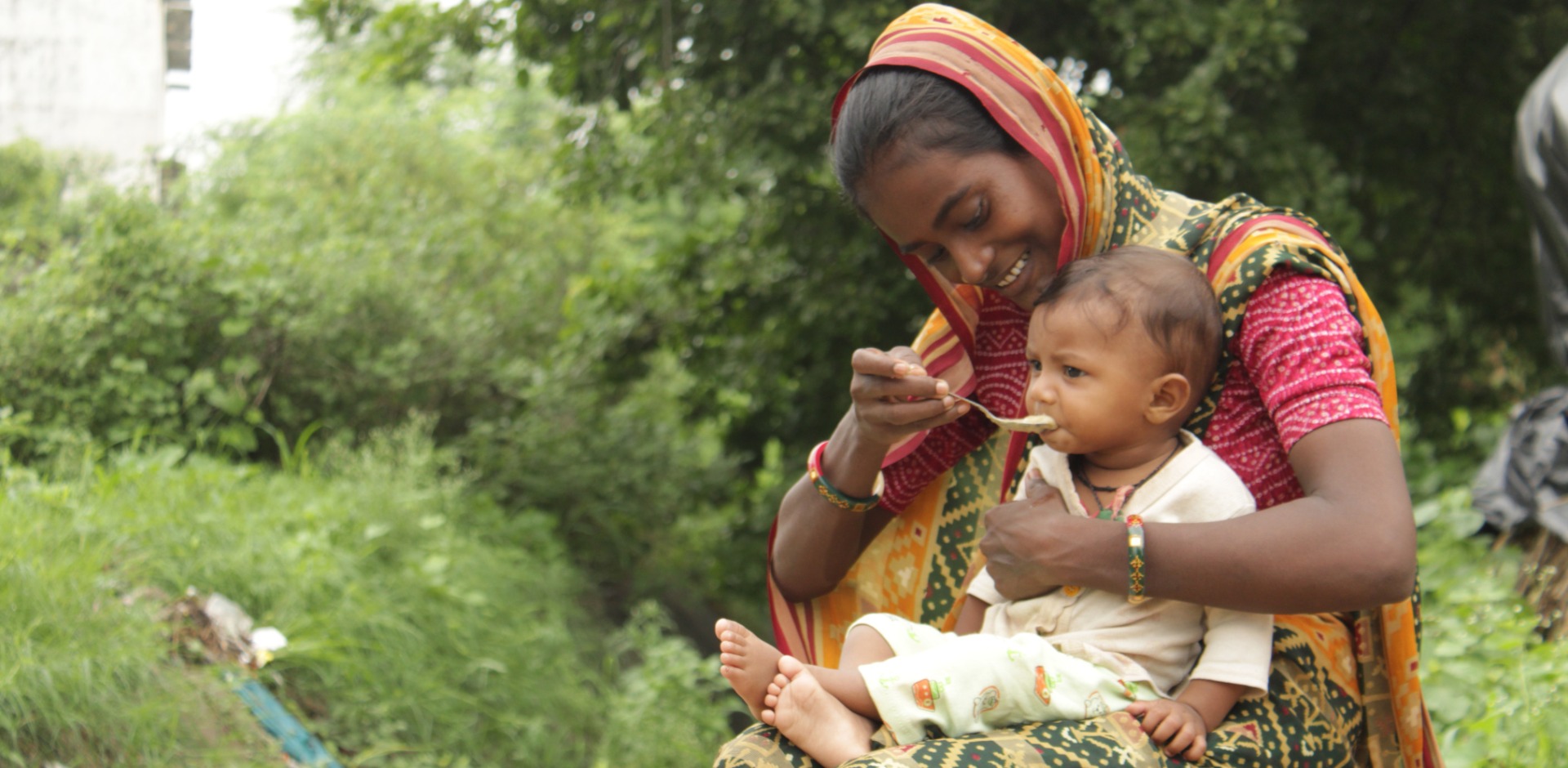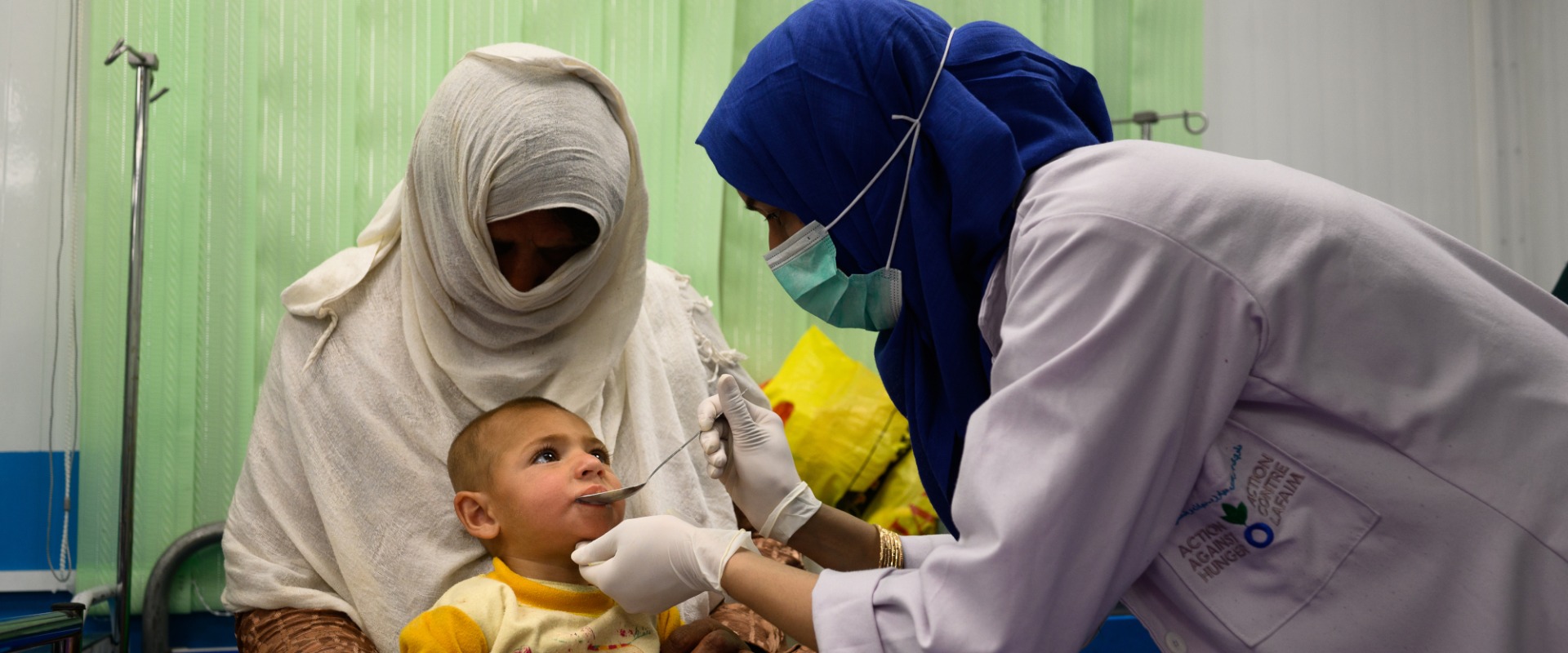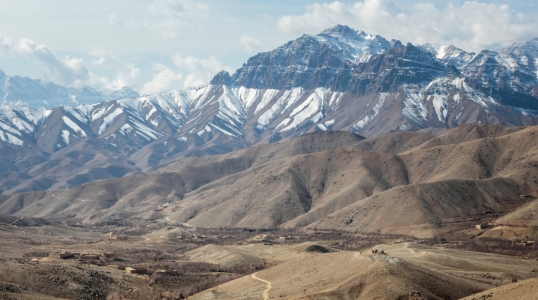
This Holiday Season, Give the Gift of Hope

According to recent estimates, 22.9 million people – about half of Afghanistan’s population – require humanitarian assistance to meet their basic needs, such as health care, food, and clean drinking water. Aid organizations are struggling to meet the needs of an estimated 3.5 million acutely malnourished children due to a combination of funding gaps and access issues.
Action Against Hunger operates in six provinces in Afghanistan, including the four provinces most affected by food insecurity: Badakhshan, Ghor, Kabul, and Helmand. Our teams run seven Therapeutic Feeding Units (TFU) where they admit and treat children diagnosed with severe acute malnutrition. However, the geographic coverage of the TFU remains limited. The recommended maximum distance a person should be from health services is 3 miles, and data from Action Against Hunger’s units shows that 60% of people travel more than that. Therefore, many provinces and remote areas remain underserved, leaving many communities at risk of not receiving proper healthcare.
A singular Family Health House can serve up to 3,000 people with a variety of services. These include outpatient consultations, delivery care, family planning, and nutrition support for pregnant and breastfeeding women. Children can receive vaccinations and treatment for severe or moderate malnutrition. Women coming to the facility for delivery also get hygiene kits to support their antenatal and postnatal care.
In Badakhshan, where many people rely on agriculture to survive, high levels of food insecurity are driven by climate shocks, unemployment and high food prices. Some families endure days without food. Action Against Hunger launched a program that distributes food baskets to people with malnutrition. Each basket typically contains flour, oil, rice, beans, and salt. A food voucher system is also in place to assist families with children who have been discharged from the TFU.
Nafas Gul is one of many residents who sought help in the Family Health House. She lives in the remote village of Robat Gelak with her extended family of 13 members. “I lost my first daughter, who was 20, due to kidney problems. I couldn’t afford to rent a car or pay for doctor’s fees or check-ups, and as a result, she passed away. Afterward, my second daughter fell ill and spent ten years living in isolation. Thanks to the care provided by this clinic and its doctors, she is now doing well,” Nafas said. “We are truly grateful to have a clinic nearby, and we are satisfied with the services they offer. Traveling to distant clinics in Kunduz, Takhar, or Faizabad by donkey or car is a great challenge for us. The clinic’s counseling sessions and the medication they provide for my daughter mean a lot to us.”
Considering the frequent floods and earthquakes in the province, the program also provides psychosocial care, and Psychosocial First Aid (PFA) training for community health workers.
In Ghor and Badakhshan, Family Health Houses made significant progress in health and nutrition activities. A total of 2,423 children under five, pregnant and breastfeeding women, and adolescents received primary health care (PHC) services. Integrated Management of Neonatal and Childhood Illness (IMNCI) for children under five surpassed expectations, with 3,444 consultations conducted this year. This tremendous work and the results demonstrate the critical need for healthcare services in these remote areas. These services are essential to the well-being of communities in Afghanistan, and any potential closure of the facilities would put many at risk.

A hotline service makes hope just a phone call away.



Join our community of supporters passionate about ending world hunger.